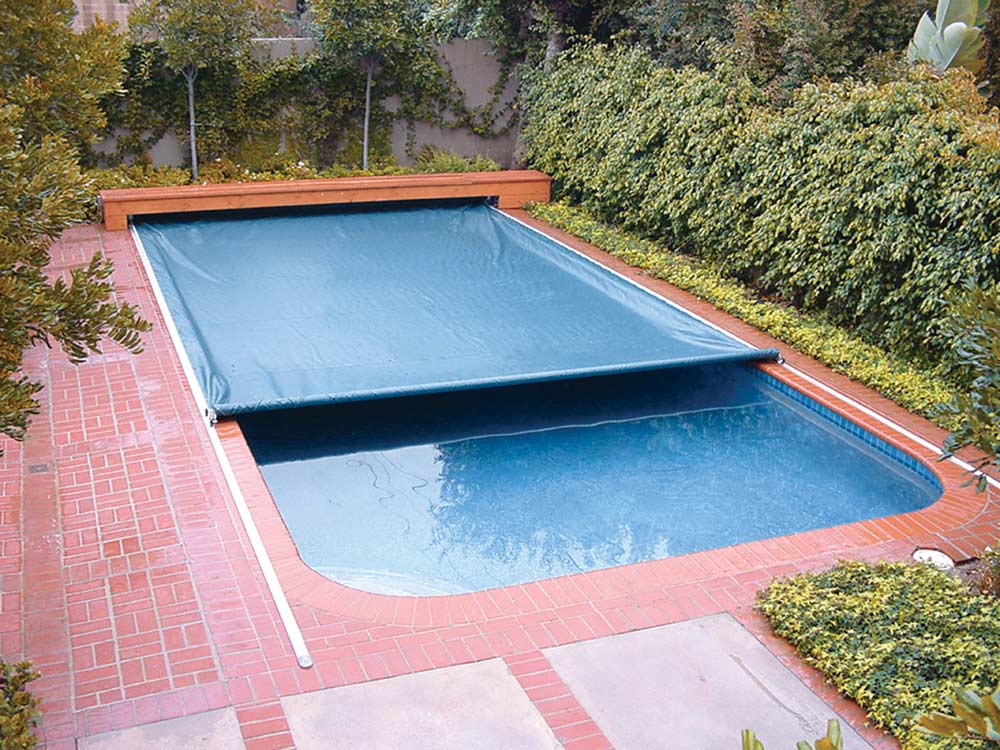
A leaking pool liner can cause water loss, structural damage, and higher maintenance costs. Detecting leaks early prevents costly repairs and conserves water. The most noticeable sign of a leak is a sudden drop in water levels. If your pool loses more than an inch of water daily, a leak might be the issue. Damp spots around the pool, loose tiles, or increased chemical usage can also indicate liner damage. Identifying leaks quickly helps prevent further complications and extends the lifespan of your pool liner.
Conducting a bucket test confirms whether the water loss is due to evaporation or a leak. Fill a bucket with pool water and mark the water levels inside and outside. If the pool water level drops significantly more than the bucket’s, a leak is present. Inspecting the liner for visible tears, wrinkles, or worn-out areas helps locate the exact problem. Using food coloring near suspected areas allows you to see if the dye gets pulled into a tear, indicating a breach in the liner.
Common Causes of Pool Liner Leaks
Understanding what causes a pool liner to leak helps prevent future damage. One common reason is aging. Vinyl liners typically last 8 to 12 years, but exposure to chemicals and sunlight weakens them over time. As liners deteriorate, they become prone to cracks and holes, leading to water loss.
Sharp objects can also puncture the liner. Pool toys, cleaning equipment, and even pet claws can create small tears that expand over time. Improper installation or shifting ground beneath the pool may cause the liner to stretch or wrinkle, resulting in weak spots that eventually develop leaks. Chemical imbalances, such as high chlorine levels or low pH, degrade the liner material, making it brittle and more susceptible to leaks.
Tree roots and underground movements also contribute to liner damage. If roots grow beneath the pool, they can push against the liner, creating pressure points that lead to tears. Detecting and addressing these issues early helps preserve the integrity of the liner and prevents costly replacements.
Quick Fixes for Minor Pool Liner Leaks
Small leaks in a pool liner can be repaired without draining the water. A patch kit specifically designed for vinyl liners provides an easy solution. These kits include adhesive and a vinyl patch, allowing pool owners to seal minor tears effectively. Cleaning the affected area before applying the patch ensures proper adhesion.
For underwater leaks, using a wet patch works best. Cutting the patch into a rounded shape prevents peeling at the edges. Pressing the patch firmly onto the leak and smoothing out air bubbles secures a strong bond. Allowing the adhesive to cure properly before resuming pool use ensures a long-lasting repair. Liquid sealants offer another alternative for minor leaks. These products are poured directly into the water, where they seek out and seal small holes in the liner. While not a permanent fix, liquid sealants provide a temporary solution until professional repairs can be made.
Checking and maintaining the pool’s filtration system helps prevent additional damage. A clogged or malfunctioning filter can increase pressure on the liner, worsening existing leaks. Scheduling a pool filter cleaner’s Victorville service ensures the filtration system runs efficiently, reducing strain on the liner and preventing further leaks.
Professional Repairs for Severe Damage
Extensive pool liner damage requires professional repair or replacement. Large tears, multiple leaks, or a liner that has surpassed its lifespan often need expert attention. Professional technicians use specialized equipment to locate and repair leaks more effectively than DIY methods.
Pressure testing helps identify hidden leaks that may not be visible. This method involves sealing pipes and adding pressure to detect air bubbles escaping from damaged areas. If the liner has widespread damage, replacing it becomes the best option. New liners improve pool aesthetics, enhance durability, and prevent future leaks. Choosing a high-quality liner with UV resistance and reinforced seams ensures longer-lasting performance.
Proper liner installation plays a crucial role in preventing future leaks. Ensuring a snug fit, removing wrinkles, and avoiding overstretching extend the liner’s durability. Using a pool cover when not in use reduces exposure to UV rays and chemicals, minimizing wear and tear. Regular professional inspections help catch potential issues early, saving money on extensive repairs.
Preventing Future Pool Liner Leaks
Routine maintenance and preventive measures extend the lifespan of a pool liner. Maintaining balanced water chemistry prevents premature deterioration. Keeping chlorine levels within the recommended range and adjusting pH levels reduces stress on the liner material. Brushing the liner gently with a soft brush prevents algae buildup without causing abrasions.
Avoiding sharp objects in the pool reduces the risk of punctures. Ensuring pool toys are made from soft materials and trimming pets’ nails before swimming helps protect the liner. Monitoring the water level regularly helps detect leaks before they worsen. If water levels drop consistently, performing dye tests or calling a professional for inspection prevents further damage.
Winterizing the pool properly also protects the liner. Draining excess water, using a winter cover, and adding protective chemicals prevent liner damage from freezing temperatures. A well-maintained pool liner ensures a leak-free swimming experience, reduces maintenance costs, and extends the life of your pool.
